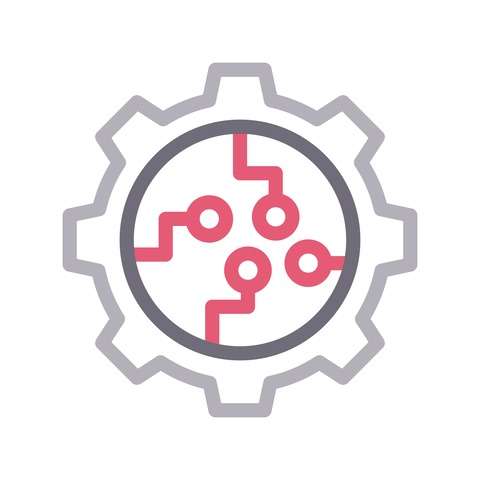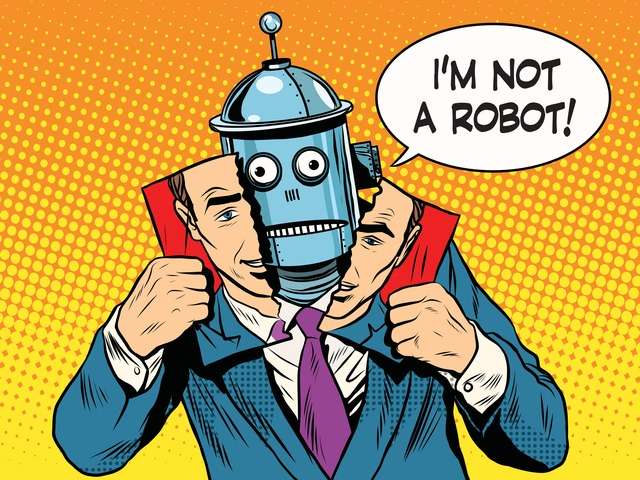Introduction to Unsupervised Learning
Unsupervised learning is a branch of machine learning that trains an algorithm to find patterns in a dataset without guidance or predefined labels. The objective is to model the underlying structure or distribution in the data to gain useful insights or patterns. The most common unsupervised learning tasks are clustering, association rule learning, and dimension reduction. Learn more about Artificial Intelligence, Machine learning, and Neural Networks.
Types of Unsupervised Learning
Primarily, unsupervised learning techniques can be divided into two categories: clustering and association rule learning.
Clustering is the grouping of data points or objects that are similar to each other. This method is predominantly used to find hidden patterns or groups in data.
Association Rule learning is a rule-based method for discovering interesting relations between variables in large databases.
Unsupervised Learning Algorithms
K-means Clustering: This algorithm partitions a data set into clusters or groups so that the data points in the same group are similar to each other than to those in other groups.
Hierarchical Clustering: This method builds a hierarchy of clusters by either a bottom-up approach (agglomerative approach) or a top-down method (divisive method).
DBSCAN: Density-Based Spatial Clustering of Applications with Noise (DBSCAN) is a density-based clustering algorithm, where groups of data points in the dataset are identified as high-density regions separated by regions of low density.
Applications of Unsupervised Learning
Unsupervised Learning has numerous applications, including social network analysis, market segmentation, astronomical data analysis, image recognition, and gene sequence analysis. E-commerce websites like Amazon use unsupervised learning for product recommendations.
Challenges in Unsupervised Learning
Unsupervised learning is a powerful tool for data analysis. However, it is more unpredictable than supervised learning as it lacks the guidance of labelled data. Interpreting the output is often difficult and uncertain. The quality of the output can be difficult to assess without subject matter experts.
Unsupervised Learning in Neural Networks
Unsupervised learning in neural networks is used to train machines to perform tasks by feeding them a huge amount of data. It aims to develop AI systems that can execute complex processing tasks similar to a human brain.
A Look at the Future of Unsupervised Learning
Earlier unsupervised learning was limited due to lack of computational power. The advent of Big Data and advanced hardware has allowed the application of unsupervised learning to vast and complex datasets. The future improvements in unsupervised learning algorithms will yield more powerful AI systems.
Quote
As Andrew Ng, a pioneer in the field of AI, once said, “AI is the new electricity”.
FAQs
What is Unsupervised Learning?
What is the difference between Supervised and Unsupervised Learning?
This article draws from the wealth of knowledge about AI and Machine Learning available online, including insights from experts in the field. Be sure to dive deeper into each topic for a comprehensive view.

The dawn of the robotic age has fundamentally transformed industries across the globe. As we teeter on the precipice of the Fourth Industrial Revolution, Robotics Automation promises to wield even more transformative power.
The History of Robotics Automation
Understanding the current state of Robotics Automation necessitates an appreciation of its evolution. From the Programmable Logic Controller (PLC) of the 1960s to the collaborative robots or ‘cobots’ of today, our understanding and application of robotics in industries have considerably evolved.
Role of Artificial Intelligence in Robotics Automation
Artificial Intelligence (AI) is the lifeblood of the contemporary robotics landscape. AI’s guiding principle of teaching machines to think and act like humans is essential for training robots to execute complex tasks independently.
Machine Learning in Robotics Automation
Embedded in the sphere of AI is Machine Learning – a system that empowers robots to learn from experience. With machine learning, robots can process enormous data, learn from it, and make predictions or decisions without being explicitly programed to do so.
Neural Networks in Robotics Automation
One step deeper in the hierarchy of AI sits Neural Networks. Inspired by the human brain, these networks enable robots to identify patterns, classify data, and make educated guesses.
Benefits of Robotics Automation
Robotics Automation offers a multitude of benefits – from reducing operational costs to increasing productivity, ensuring precision to enhancing safety.
Efficiency and Productivity
Through automation, industries can improve efficiency and maximize productivity. Robots can work 24/7 without fatigue, substantially raising output.
Accuracy and Quality
Automation minimizes the chances of human errors. Robots can maintain high levels of accuracy and consistency, ensuring improved quality in production.
Challenges in Robotics Automation
While the advantages of Robotics Automation are undeniable, the path to full integration is lined with obstacles. The biggest challenges include high implementation costs, need for skilled workforce, and threat to jobs; the latter being a contentious issue with social and economic implications.
The Future of Robotics Automation
The future of Robotics Automation looks bright, powered by advancements in AI, Machine Learning and Neural Networks. The advent of smart factories, led by intelligent robots capable of self-learning and continuous improvement, is no longer a far-off dream.
How Artificial Intelligence is integral to Robotics Automation?
What are the challenges industries face in implementing Robotics Automation?
In the words of Andrew Ng, “Artificial Intelligence is the new electricity. Just as 100 years ago electricity transformed industry after industry, AI will now do the same.” With the role AI plays in the proliferation of Robotics Automation, this quote seems more relevant than ever.
Facts and statistics support these assertions. According to McKinsey, the potential value of AI, including machine learning, deep learning, and neural networks, could reach up to $5.8 trillion annually. And according to AIMultiple, the robotics automation market is poised to hit $214 billion by 2026. These numbers underline why Robotics Automation matters and its potential to revolutionize industries around the globe.

Predicting the Future through Analytics
With advanced technologies like artificial intelligence (AI) and machine learning, predictive analytics has become an integral part of today’s digital revolution. Predictive analytics uses data, statistical algorithms, and techniques to anticipate future outcomes based on historical data. It acts as a guide, enabling companies to navigate the trajectory of their market, forecasting trends, customer behavior, and other critical business intelligence.
Role of AI and Machine Learning
The real power that fuels predictive analytics comes from AI and machine learning. These technologies not only automate raw data processing but also learn from accumulated data to make more accurate predictions over time. With the ability to handle a large volume of data sets, machine learning can predict future events with amazing accuracy, while deep learning, a subset of machine learning, mimics the human brain’s workings to process data through neural networks.
Vitality of Neural Networks
Neural networks play a crucial part in making predictive analytics powerful. They imitate the human brain’s functioning, enabling the system to learn from input data, derive meaningful output, and improve over time. Deep neural networks, specifically, are instrumental in reducing the time and effort needed to update predictive models, rendering the forecasting more efficient and accurate.
Business Applications
From healthcare to finance, predictive analytics reshapes various sectors. For instance, in healthcare, it can predict patient readmission rates, aiding hospitals in refining their patient care strategies. In finance, it helps in identifying potential risks and opportunities, guiding investment strategies.
Impact on Decision Making
Predictive analytics revolutionizes decision-making processes. With predictive insights, businesses can strategize proactively rather than reactively, identify opportunities and pitfalls, and streamline their operations for better efficiency and profitability.
Challenges in Predictive Analytics
While predictive analytics offers numerous benefits, there are challenges too. Data privacy issues, lack of skilled workforce and data integration, and uncertainty in forecasts are some of the hurdles organizations face while adopting predictive analytics.
Future of Predictive Analytics
With the rise of AI and machine learning, the future looks promising for predictive analytics. Emerging technologies like the Internet of Things (IoT) and 5G will fuel more data, enhancing predictive analysis further.
Democratization of Predictive Analytics
The democratization of predictive analytics is on the horizon, with tools becoming more accessible and user-friendly, allowing even non-technical experts to leverage predictive insights.
Real-time Predictive Analytics
The rise of real-time predictive analytics is another trend to watch out for. With the influx of real-time data through IoT devices and sensors, organizations can make instant prediction-based decisions.
What is predictive analytics?
How is AI used in predictive analytics?
As Albert Einstein once sai, “The measure of intelligence is the ability to change.” This quote resonates with the transformative influence of artificial intelligence on predictive analytics, driving change and revolutionizing numerous sectors. Indeed, predictive analytics exemplifies the essence of intelligence by enabling meaningful changes based on foresight, thus powering the revolution in various industries.
Artificial Intelligence – Predicted Workforce Displacement Due to AI

Natural Language Processing Predicted Workforce Displacement Due to AI
More about Artificial Intelligence: Weekly Roundup
Artificial Intelligence: The Potential Impact of AI on Job Security
Predicted Workforce Displacement Due to AI
© 2023 Our Website – Artificial Intelligence. All Rights Reserved.
[meta.author=Our Website]